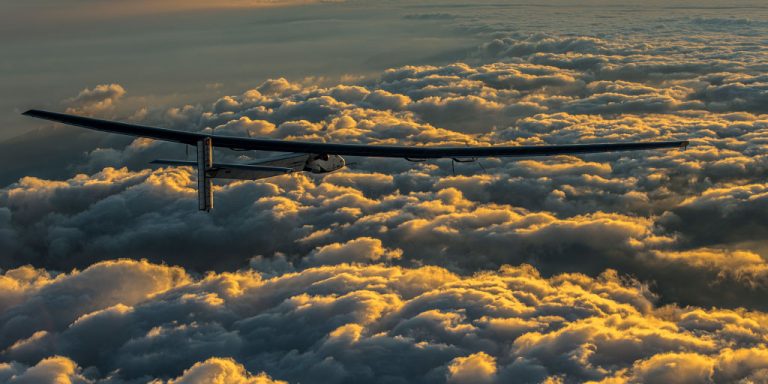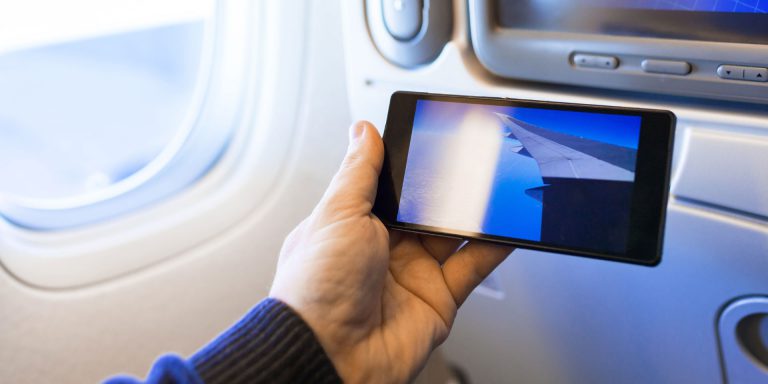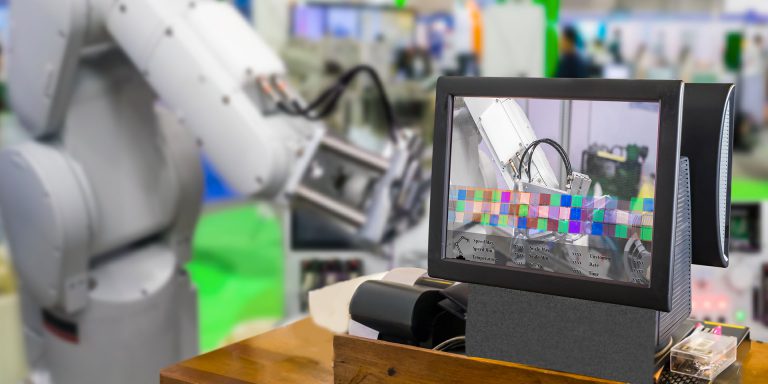Solar Impulse: 5 challenges for a successful round-the-world trip
The second half of Solar Impulse 2’s round-the-world trip has resumed from Hawaii, taking advantage of the longer sunshine hours during this season. The aircraft is completely powered by solar energy, and therefore there are several obstacles to overcome to successfully reach its destination, particularly weather-related challenges. The Swiss pilots André Borschberg and Bertrand Piccard must completely rely on the calculations made by Altran to take the best routes. “The weather is a critical element and must be prepared, calculated, evaluated, planned, re-estimated and reviewed”, states Christophe Béesau, who is in charge of strategy and flight forecasts for Solar Impulse at Altran.
In Monaco, at the Mission Control Centre, the members of the Altran team have a genuine co-pilot role. They explain the challenges involved.
1. Collecting as much energy as possible while flying during the day
Each flight, which is supposed to last between three and five days (four maximum for the first stage to the West Coast of the United States), will struggle to deal with unexpected cloud cover.
“The first challenge is collecting energy”, continues Christophe Béesau. “The aircraft was designed to fly 24 hours a day in favourable conditions, and we need mostly blue skies to collect as much energy as possible and be able to continue through the night.”
The three engineers on the Altran simulation team aim to find the best route for the aircraft in order to optimise solar charging periods between 9am and 11pm. The idea is that the flight can continue during the night through propulsion, with the batteries discharging, until sunrise.
No two situations are the same. “Calculations depend on flight latitude, the season, the flight profile – a whole range of factors.”
2. Passing through turbulence
“The second challenge involves wind, specifically vertical wind and phenomena known as wind shear”, explains Christophe Béesau. Solar Impulse’s wingspan – 71.9 metres – is comparable to an Airbus, but with a significantly lower speed and weight, which makes it particularly sensitive to wind.
“If an aircraft flies at 500 knots and gets caught in a vertical current for half a second, the leverage effect is quite quick, the aircraft shakes a little but it isn’t too bad, whereas with Solar Impulse, which flies at 50 knots, it gets caught in the current for five seconds rather than half a second, and during this time the wind can completely destabilise the aircraft, or possibly cause structural damage to the wings.”
The Altran simulation team may need to completely modify a flight plan if it discovers that there are likely threats within the next 48 to 72 hours on the planned flight path.
3. Managing pilot rest
The length of each flight is a physical and mental challenge for the pilot. Altran engineers therefore play a significant role to support them. “We have to be in several places at once, carry out very detailed monitoring and check that everything is working together”, continues Christophe Béesau. “This isn’t just about calculations, we need to look at everything carefully – thinking like a pilot – to take into account, for example, the rest periods in the cockpit.”
The conditions can be awful. The rest periods must be painstakingly planned to ensure that a pilot is available during key moments, particularly during the critical landing stage.
« The pilot must be able to sleep for very short twenty minute periods, for a daily total of just a few hours »
Christophe Béesau, Altran, in charge of strategy and flight forecasts for Solar Impulse
“The pilot must be able to sleep for very short twenty minute periods, for a daily total of just a few hours”, he explains. “The pilots can only sleep at low altitude. It is impossible to sleep with an oxygen mask on, it’s too restricting. Overall, they don’t sleep much and they can’t sleep whenever they want, because when they are above 12,000 feet, they are unable to sleep as they cannot breathe naturally. Above 16,000 feet, eating and drinking is quite acrobatic.”
The climbing and descending cycles affect the inside temperature of the cockpit quickly and significantly (between -20 and +30 Celsius), which is challenging for the body and can cause excessive fatigue. This is added to the fact that the pilots must remain perfectly clear-headed to manage the various in-flight operations, from the most basic to the most technical.
The fatigue of the ground teams must also be taken into account, even if there are regular shift changes.
4. Crossing the Atlantic before the end of July
The arrival on the West Coast, then the take off two days later towards New York, after a period of maintenance, must take place before the end of spring. “After 15 June, the tornado season starts in North Texas, towards Oklahoma”, recalls Christophe Béesau.
The landing in New York will hopefully take place before the end of May. “The most likely date is 15 June”, adds Christian Le Liepvre, who is in charge of the Solar Impulse partnership at Altran, “but this doesn’t mean that it couldn’t happen on 15 July…”
Arriving on the East Coast as early as possible will be key to boost confidence before the real challenge starts: crossing the Atlantic, which will be the most difficult leg. A choice must be made between the shorter and darker routes to the north, and the longer but brighter routes to the south, with more anticyclones forecast.
« If we don’t cross the Atlantic before late July, we’ve had it »
Christian Le Liepvre, Altran, Head of the Solar Impulse partnership
Christian Le Liepvre believes that “if we don’t cross the Atlantic before late July, we’ve had it. The later it gets after 21 June, the more difficult it will become, and so there is a lot of pressure to get to New York as soon as possible and then take off again”.
5. Coping with the pressure
The staff at the Mission Control Centre in Monaco are well prepared after several incidents which required the engineers to adapt and keep calm to prevent the worst from happening. The overheating batteries last year, which interrupted the round-the-world journey, was nothing compared to the incident when a 1 x 3 metre panel detached from the wing of Solar Impulse’s first model.
These challenges have helped hone the team’s response to unpredicted events. “Since last year,” states Christian Le Liepvre, “we have improved the automated system and the virtual co-pilot; we have improved system responsiveness and sensitivity, so that the alarms are more relevant; the human-machine interface has also been improved; and we have developed a super-calculator which has increased our calculation capacity 100-fold. Last year, only the most likely forecasts were considered, but this year, all scenarios, from the most likely to the least likely, will be considered”.
“The ground team experiences a great deal of stress,” confirms Christian Le Liepvre. “This stress doesn’t just last five days in a row – it’s a four month expedition. We have a strong obligation to succeed as there is a pilot in the air. Our response to this pressure is to simplify decision-making and analysis processes, where possible.”
Everyone knows that there will be even more challenges between now and the final landing in Abu Dhabi, which will be the culmination of a unique challenge in the history of aviation, and where the weather will have been a challenge rather than an asset and a boost for the engineers.








